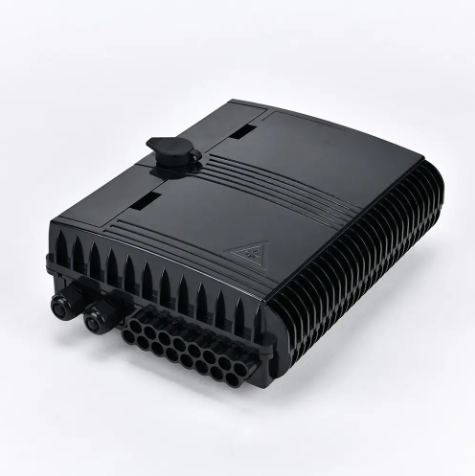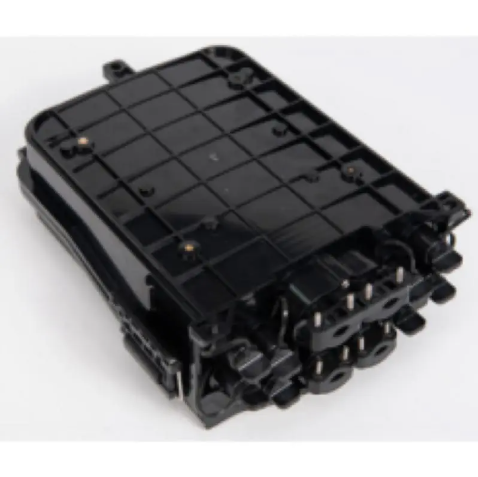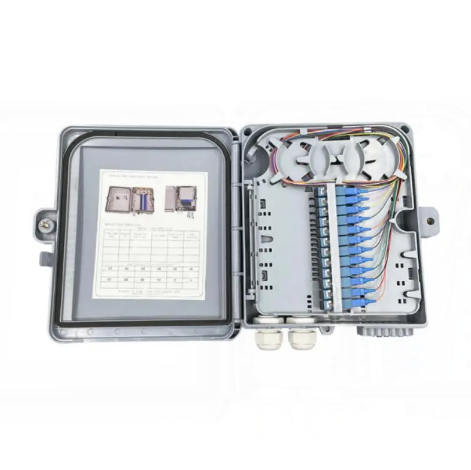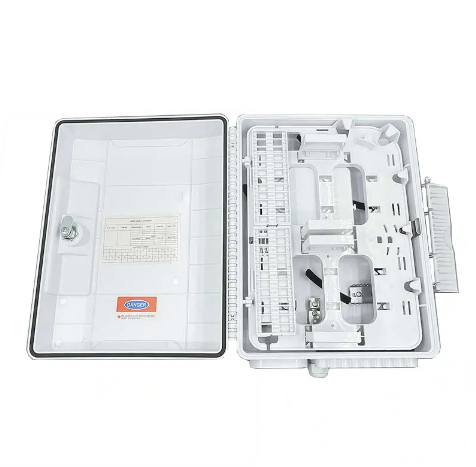OYI International Ltd is a relatively experienced company founded in 2006 in Shenzhen, China, which is engaged in manufacturing fiber optic cables that have helped expand the telecommunication industry. OYI has developed into a company that delivers fiber optic products and solutions of superior quality and therefore fostered the formation of a strong market image and constant growth, as the company's products are shipped to 143 countries and 268 of the firm's customers have had a long-term business relationship with OYI. We have a highly professional and experienced employee base of over 200.
The continuity brought by the integration of today's world of information transfers has its foundation in advanced fiber technology. At the center of this is the Optical Distribution Box (ODB), which is central to fiber distribution and greatly determines the reliability of fiber optics. ODM is therefore the process of installing the Optical Distribution Box at a location, which is a complicated task that cannot be handled by individuals especially those with less understanding of fiber technology. Today let’s focus on the various processes that go into installing an ODB, including the role of the Fiber Cable Protect Box, the Multi-Media Box, and other components to better understand the fact that all of these parts are valuable to the effectiveness of a fiber system.
As it supports an optical fiber link, its system is known as an Optical Distribution Box, Optical Connection Box (OCB), or Optical Breakout Box (OBB).The Optical Distribution Box is commonly referred to by its acronym, ODB, and is a major hardware component in fiber optic com systems. They help in joining several fiber cables and relieving the optic signal towards diverse targets. The ODB also has a few important parts viz., the Fiber Cable Protect Box and Multi-Media Box both are very important for the proper safety of fiber connectivity and proper handling and routing of multimedia signals respectively.
Before the actual installation, a basic groundwork assessment is made on the room where the ODB is to be installed. This involves the evaluation of the area within which the ODB will be situated to meet all the criteria that may be deemed essential. Elements of availability of the source, the conditions in which the power can be used, and how close these powers are to the electrical outlets are considered. There is a requirement that the installation site must be clean free from dampness, well-ventilated area with no exposure to extreme temperature and direct sunlight to have the efficiency of ODB.
Step 1: The ODB is mounted and this begins with the installation process of the ODB on a right surface. This can be a wall, a pole, or any other solid structure capable of holding the ODB weight and size if it is required. The screws and other hardware, often supplied with the ODB, can be employed on the mounting to make sure the box is fixed properly. It is important to be certain that the ODB is level and well-secured on the frame to avoid any shift of positions which will result in the damaging of the inner structures.
Step 2: To begin, it is pertinent to prepare the fiber cables which requires some steps such as cleaning the fibers, coating the fibers with a resin solution and then curing them, and polishing the fiber connectors. After confirming that the ODB is in place, the preparation for the fibers involves the proper connection of the cables. This involves removing the outer covering of the fiber cables to enhance light carrying capacity of specific fibers only. The fibers are then combed and checked for any defects or signs of wear on the fiber. Fibers are delicate and besides, if contaminated or broken fibers the effectiveness of the fiber network may be compromised.


Step 3: Simulation of Installing the Fiber Cable Protect Box. The brief description of our product, Fiber Cable Protect Box, demonstrates that it is a part of the ODB intended to protect the rather sensitive fiber cables. The protection box is mounted inside the ODB to accommodate all fiber cables to be protected from damage. This particular box is beneficial in that it helps keep the cables from twisting or bending and consequently, the signal will weaken. Installation of a project box is very important in the application of optical fiber connections so that it can function as required.
Step 4: Tying Up The Fibers. Having deployed the Fiber Cable Protect Box, each of these fibers can now be connected directly to various internal elements of the ODB. This is done by coupling the fibers with the relevant connectors or adapters in the ODB. There are two primary methods of splicing: In terms of the general methods, we have fusion splicing and mechanical splicing. Fusion splicing and mechanical splicing are also some of the types of splicing that are common these days. Fusion splicing refers to a technique whereby the fibers are joined using a fusion machine, feasible only for overhead construction that results in a low-loss splice. Mechanical splicing, however, attempts to bring the fibers in a connector mechanically. Both methods can be precise and must be handled by professionals so that the fiber network will work perfectly.
Step 5: There is an addition of a new device called Multi Media Box. Another essential part of the ODB is the Multi-Media Box, which has the purpose of controlling signals multimedia. This box provides the capability to multiplex video, audio, and data media signals in the converged fiber system. To connect the Multi-Media Box to the projector, one has to plug it well in the right ports and make some corrections if it is to recognize the multimedia signal. The Practice Switch is used to test if the fundamental operations of the delivered box are fine upon the installation of its program.


Step 6: Testing And Validating. Once all those components have been put in and linked together, several tests are run to check whether the ODB is performing as expected. This involves verifying the signal power and integrity of the fibers in the links that feed the system to avoid weak signals and signal attenuation. As a result of the testing phase, any anomalies or problems are detected and resolved before installation is completed.
The installation of the Optical Distribution Box is another focal point that must be accomplished on-site, and it is also a delicate process that must be measured and calculated. Every single detail, from the ODB to connecting the fibers, the putting down of the Fiber Cable Protect Box, to the installation of the Multi-Media Box is important when it comes to making the fiber systems as reliable and efficient as possible. Through the above-mentioned steps and by integrating best practices and approaches, it will be possible to guarantee that the ODB works at its highest level and could prove to be a solid foundation for the future evolution of fiber optic technology together with unobstructed multimedia communication. Ced of the fiber networks we use today in our modern society depend on the installation and maintenance of other parts like ODB and this shows us the need to have professionals and skilled personnel in this sector.

 0755-23179541
0755-23179541  sales@oyii.net
sales@oyii.net